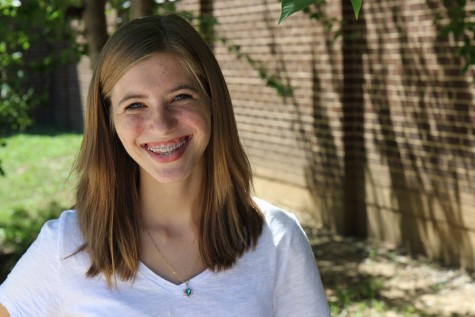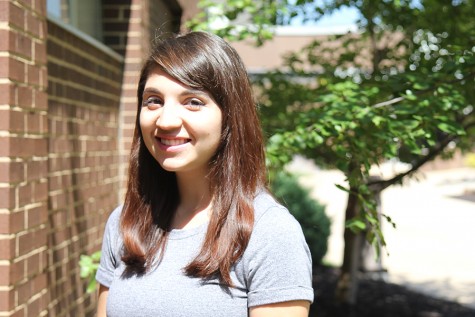EBN: YouTube unblocked
YouTube becomes unblocked for students
October 25, 2014
RSD unblocked YouTube for its students in middle and high school, May 2014.
Campus is a bit more secure, ironically, now that the world of YouTube is open to secondary students. No longer will teachers have to log in to computers for students so the students can access blocked topics while researching.
“I couldn’t get on and watch videos when I had free time,” Kaitlyn Frerking (10) said, “And when I actually wanted to do work for a class I couldn’t do it because YouTube was blocked and it made things a lot harder. I was looking for a lot of French videos for pronunciation. It is hard to learn French without having someone speak it with you.”
YouTube being unblocked gives students more freedom in how they study at school.
“I am an advocate for opening up technological resources to staff and students. The more we open things up that we use on a daily basis outside of school the better,” Mrs. Deborah Asher, head principal, said. “Then we need to focus on teaching good use of the resources that we have and having a positive digital footprint.”
Students can learn anything on YouTube from playing guitar to knitting. Students can also use YouTube educationally, for example, Christian Hindersman (11) uses Crash Course for different educational topics.
“It’s a good way to go over notes in classes I’ve already done,” Hindersman said. “Last year I watched a lot of Crash Course chemistry to help me prepare for the final.”
Flipped classrooms are a big part of the reason teachers wanted YouTube available for their students. A flipped classroom is when a teacher posts a video for their students to watch as homework and then go over what the students learned in class.
“We have teachers who have said that they have videos that they want their students to watch that are on YouTube ,” Mr. Will Blaylock, Chief Information Officer, said. “And they need to be able to view them.”
Mrs. Julia McIntyre, Language Arts teacher, uses YouTube in her flipped classroom.
“There is a lot of great videos,” Mrs. McIntyre said. “There is interesting stuff that relates to things we use in language arts. It might be clips from television shows that show a concept that we’re working with or whole episodes of shows or clips of movies that really fit in with what we’re doing.”
Mrs. McIntyre used “Everybody Loves Raymond” – The Can-opener to show her ninth graders point of view.
YouTube will be a good resource for students, allowing them to take advantage of different study tools and more.
“I think it could help with projects,” Knobbe said, “Like if I need to look something up for ALAR/P. We had to have an introduction for our speech, and I had to find a clip from a movie and then I showed it. The movie was “Twelve Years a Slave.” My speech was about slavery and the effects of cinematography and how it affected the mood of the movie.”
Mrs. Jeanette Oberg, French teacher, uses YouTube frequently in her classes.
“There is just so much more that is current that happens right now that the students can see,” Mrs. Oberg said. “From a cultural standpoint it’s fun and it’s interesting. It is used a lot in languages because students can see it, hear it, and repeat it.”
Mrs. Oberg used a video on French marketing to teach her French IV students.
Mr. Blaylock thinks that YouTube for students will be effective because they will be able to work on some of their homework at school when needed.
“If a student is in another classroom where they have some downtime they can get to those resources,” Mr. Blaylock said. “If they’re at school before school starts or after schools out they can still log in and get those resources that the teachers put up there. I really see it as a positive thing.”
Students will now have to contend with the distraction of YouTube, becoming off task and unproductive.
“I find personally making a decision not to do something because someone might misuse it is not a legitimate reason for a decision,” Mrs. Asher said.
Mrs. McIntyre plans on handling those students on an individual basis.
“It is going to depend on who they are, how often they are misusing it and what they are misusing it for,” Mrs. McIntyre said.
Student may not realize they have YouTube access. There have been some problems with accessing YouTube this year already.
“The problems are still ongoing. Google has changed the way that they redirect ‘http’ to ‘https’,” Mrs. Deborah Ketring, Technology Support Service Coordinator, said. “They are frequently changing the coding behind the scenes for the actual specific videos. Our content filter is having a difficult time getting the coding from Google in a timely manner.”
Right now YouTube is working for most students and hopefully it will stay that way.
“Millions of subscriptions happen each day. The number of people subscribing daily is up more than 3x since last year, and the number of daily subscriptions is up more than 4x since last year,” according to YouTube’s statistic’s page.
YouTube is certainly here to stay, a reality students need to learn to navigate.
“It really does depend on the kind of attitude students have towards their studies,” Hindersman said. “Regardless, there is always going to be students that will use their time wisely and people that won’t use their time wisely.”















